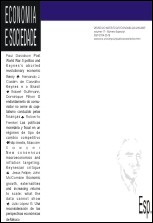Resumo
Durante o verão de 2007 a crise imobiliária dos EUA transformou-se em um arrocho de crédito [credit crunch] global que está ameaçando transtornar a economia mundial. Enfrentamos hoje (meados de 2008) a perspectiva de uma desaceleração significativa ou mesmo de uma recessão global. Não importa qual desses cenários por fim se revelará, o arrocho progressivo colocou em xeque a viabilidade a longo prazo de um padrão de crescimento global que, nas últimas décadas, contou em grande medida com os Estados Unidos como o “comprador de última instância” do mundo. Essa dramática reviravolta coloca em risco a transição suave para um novo regime de acumulação conduzido pelas finanças [finance-led accumulation regime] e para um novo padrão de crescimento multipolar. Se a crise ainda não é sistêmica, o surto atual de problemas nos principais mercados financeiros do mundo certamente sinaliza o primeiro grande teste de resistência desse novo regime. Nós gostaríamos de enfocar, nesse artigo, um pilar central do regime – o endividamento das famílias americanas – a fim de extrair algumas percepções plausíveis sobre a natureza e implicações da crise atual.Referências
AGLIETTA, M. Le capitalisme de demain. Paris: Fondation Saint-Simon, 1998.
AGLIETTA, M; BERREBI, L. Désordres dans le capitalisme mondial. Paris: Odile Jacob, 2007. AMABLE, B. Les cinq capitalisms: diversité des systèmes économiques et sociaux dans la mondialisation. Paris: Seuil, 2005.
BANK FOR INTERNATIONAL SETTLEMENTS. What explains the US net income balance? BIS Working Paper, n. 223, Jan. 2007.
BERNANKE, B. The global saving glut and the US current account deficit. Remarks at the Sandridge Lecture, Virginia Association of Economics, Richmond, Virginia, 10 Mar. 2005.
BORDO, M.; FLANDREAU, M. Core, periphery, exchange-rate regimes and globalization. In: BORDO, M.; TAYLOR, A.; WILLIAMSON, J. (Ed.). Globalization in historical perspective., Chicago: University of Chicago Press / National Bureau of Economic Research, 2001. p. 417-472.
BOYER, R. Is a finance-led growth regime a viable alternative to fordism ? A preliminary analysis. Economy and Society, v. 29, n. 1, Feb. 2000.
BOYER, R; DEHOVE, M.; PLIHON, D. Les crises financiers. Paris: La Documentation Française, 2004. (Conseil d’Analyse Economique Report, n. 50). Disponível em: www.cea.gouv.fr.
BRENDER, A.; PISANI, F. Les déséquilibres financiers internationaux. Paris: La Decouverte, 2007.
COUNCIL OF ECONOMIC ADVISORS. Economic Report of the President. Washington, DC: US Government Printing Office, 1973/2008.
CORIAT, B.; PETIT, P.; SCHMEDER, G. (Ed.). The hardship of nations: exploring the paths of modern capitalism. Aldershot, UK: E. Elgar, 2006.
CURCURU, S.; DVORAK, T.; WARNOCK, F. The stability of large external imbalances: the role of returns differentials. Washington, DC: NBER, May 2007. (NBER Working Paper, n. 13074).
DOOLEY, M.; FOLKERTS-LANDAU, D.; GARBER P. The revived Bretton Woods system. International Journal of Finance and Economics, v. 9, n.4, p. 307-313, 2003.
EICHENGREEN, B. Global imbalances and the lessons of Bretton Woods. Cambridge, MA: MIT Press, 2007.
EPSTEIN, G. (Ed.). Financialization and the world economy. Aldershot, UK: E. Elgar, 2004.
EUROPEAN CENTRAL BANK. Adjustment of global imbalances in a financially integrating world. Monthly Bulletin, p. 62-74, Aug. 2007a.
EUROPEAN CENTRAL BANK. Long-term developments in MFI loans to households in the euro area: main patterns and determinants. Monthly Bulletin, p. 69-84, Oct. 2007b.
GODLEY, W. Strategic prospects and policies for the U.S. economy. Annandale-uponHudson: Levy Institute, 2002. (Economics Strategic Analysis Archive, n. 02-4).
GODLEY, W; IZURIETA, A.; ZEZZA, G. Prospects and policies for the U.S. economy: why net exports must now be the motor for U.S. growth. Annandale-upon-Hudson, NY: Levy Institute, 2004. (Economics Strategic Analysis Archive, n. 04-7).
GODLEY, W.; LAVOIE, M. Monetary economics: an integrated approach to money, credit, income, production and wealth. London: Palgrave Macmillan, 2006.
GODLEY, W; PAPADIMITRIOU, D.; HANNSGEN, G.; ZEZZA, G. The US economy – Is there a way out of the woods? Annandale-upon-Hudson, NY: Levy Institute, 2007. (Economics Strategic Analysis Archive, n. 07-11).
GREENSPAN, A.; KENNEDY, J. Estimates of home mortgage originations, repayments, and debt on one-to-four-family residences. Washington, DC: Federal Reserve Board, 2005. (Finance and Economics Discussion Series, n. 2005-41).
GUTTMANN, R. How credit-money shapes the economy: the United States in a global system. Armonk, NY: M. E. Sharpe, 1994.
GUTTMANN, R. The collapse of securitization: from subprimes to global credit crunch. Villetaneuse: Centre d’Economie Paris-Nord, Dec. 2007. (La Lettre du CEPN, n. 2).
HEIN, E.; VAN TREECK, T. ‘Financialisation’ in Kaleckian/Post-Kaleckian models of distribution and growth. Düsseldorf, Germany: Institut für Makroökonomie und Konjunkturforschung, 2007. (IMK Working Paper, n. 07-2007).
INTERNATIONAL MONETARY FUND. Spillovers in the global economy. World Economic Outlook, Apr. 2007.
KRIPPNER, G. The financialization of the US economy. Socio-Economic Review, v. 3, n. 2, p. 173-208, 2004.
MCCONNELL, M.; PEACH, R.; AL-HASHIMI, A. After the refinancing boom: will consumers scale back their spending. Current Issues in Economics and Finance, Federal Reserve Bank of New York, New York, v. 9, n. 12, p. 1-7, 2003.
MINSKY, H. Longer waves in financial relations: financial factors in the more severe depressions. American Economic Review, v. 54, n. 3, p. 324-335, 1964.
ORLEAN, A. Le pouvoir de la finance. Paris: Odile Jacob, 1999.
PLIHON, D. Le nouveau capitalisme. Paris: La Decouverte, 2004.
SIMON, R.; HAGERTY, J.; AREDDY, J. Global investors gobble up mortgage-backed securities, Keeping prices strong. Wall Street Journal, A1, Aug. 24, 2005.
STIGLITZ, J. Globalization and Its discontents. New York: W.W. Norton, 2002.
STOCKHAMMER, E. Financialisation and the slowdown of accumulation. Cambridge Journal of Economics, v. 28. n. 5, p. 719-741, 2004.
STOCKHAMMER, E. Some stylized facts on the finance-dominated accumulation regime. Paper presented at the Finance-led Capitalism? Macroeconomic Effects of Changes in the Financial System,” 11th Workshop of Research Network Macroeconomic Policies, Berlin, Oct. 26-27, 2007.
SUMMERS, L. Reflections on global account imbalances and emerging market reserves.
L K Jha Memorial Lecture, Reserve Bank of India, Mumbai, 24 Mar. 2006.
WOLFSON, M. Neoliberalism and international financial instability. Review of Radical Political Economics, v. 32, n. 3, p. 369-378, 2000.
A Economia e Sociedade utiliza a licença do Creative Commons (CC), preservando assim, a integridade dos artigos em ambiente de acesso aberto.


